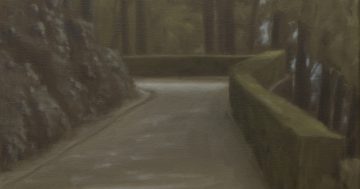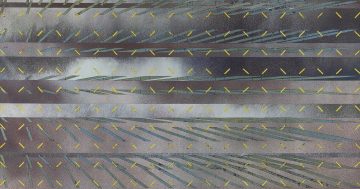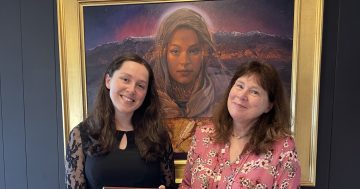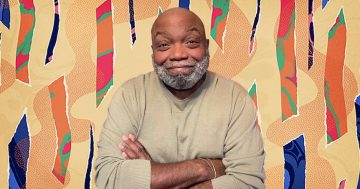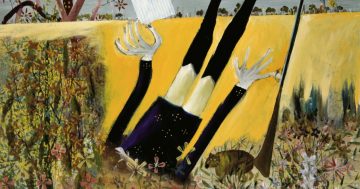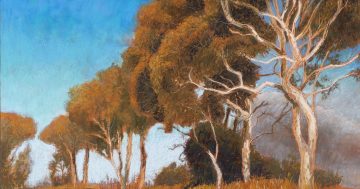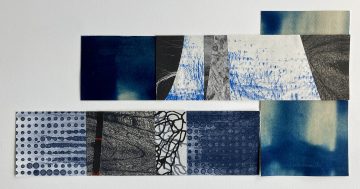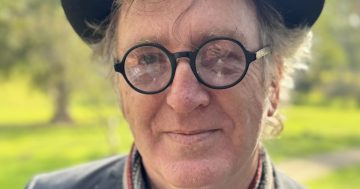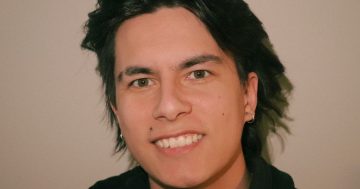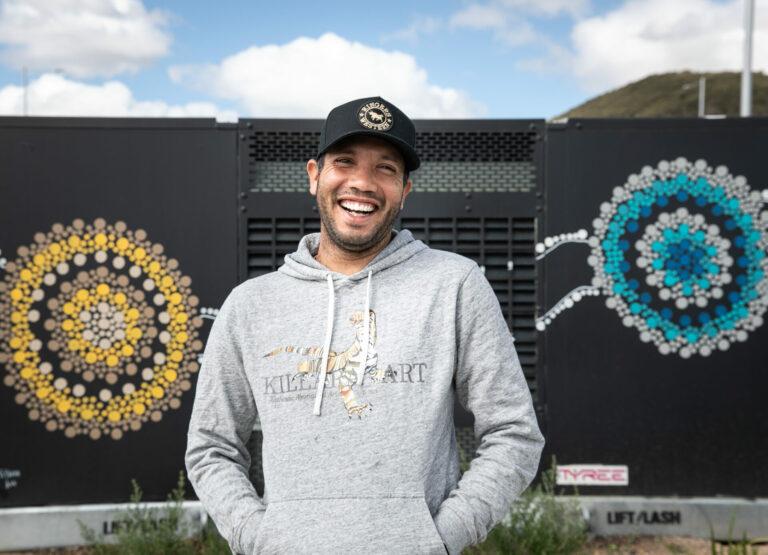
Artist Steven Kennedy’s canvas is everything but the traditional canvas. Photo: Capital Estate Developments.
Chances are you’ve passed by local artist and Kamilaroi man Steven Kennedy’s work in Canberra – but probably not in the places you would expect.
If you live in Denman Prospect, played or watched a game at Amaroo District Playing Fields, have young children and live near Wanniassa, or if nature has called in Lyneham, then you might have seen his art.
Steven’s designs can be found on electrical substations (Denman Prospect), pumphouses (Amaroo), childcare centres (Wanniassa) and public toilets (Lyneham), to name a few.
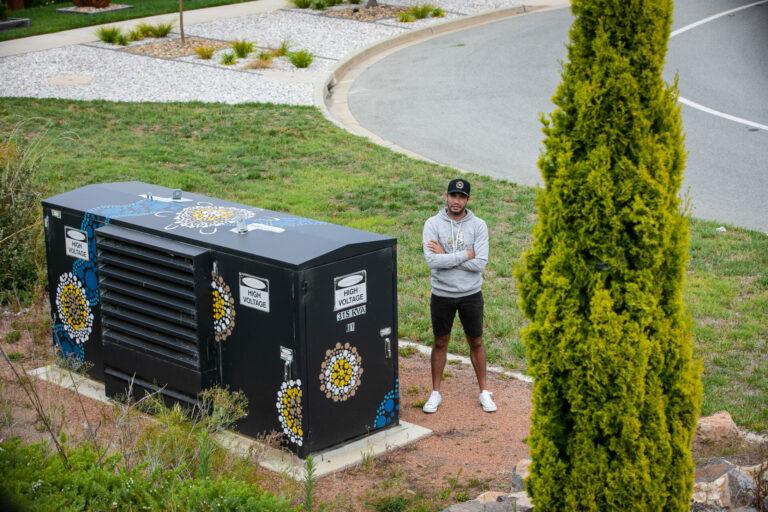
Steven says the Denman prospect murals are inspired by the cultural significance of the suburb as a “water meeting place”. Photo: Capital Estate Developments.
But the reason Steven launched his public art business Killara Art is just as unconventional as the objects he is now regularly challenged to transform from utilitarian to unique.
“I work in a highly stressful environment where some of the details I hear can’t escape my mind,” Steven says when asked what inspired him to launch his art business in 2021.
Steven’s day job is as a convener at the ACT Restorative Justice Unit, where he facilitates conversations between those who have committed an offence and those harmed.
“We deal with matters from the stolen 50-cent chocolate bar all the way up to the really serious stuff that lands people in jail for life, and every matter in between,” he says.
But it wasn’t until 2021 when Steven’s sister and artist Kristie Peters of Yarrudhamarra Creations asked him for a favour that he discovered art as a “release”.
“She was so busy and she had said, ‘I need help and can you help me?'” Steven remembers. He agreed and helped Kristie with some of her public murals.
“I sat down and spoke to my wife a few times about it … and she’d noticed a few changes in me when when I was doing the art,” Steven remembers.
“It clears my mind to be honest, as cliched as it sounds … I don’t have to think too much or too deeply about things.”
Steven’s wife suggested he make a business out of it and with a bit of administrative help from his sister, Killara Art was born.
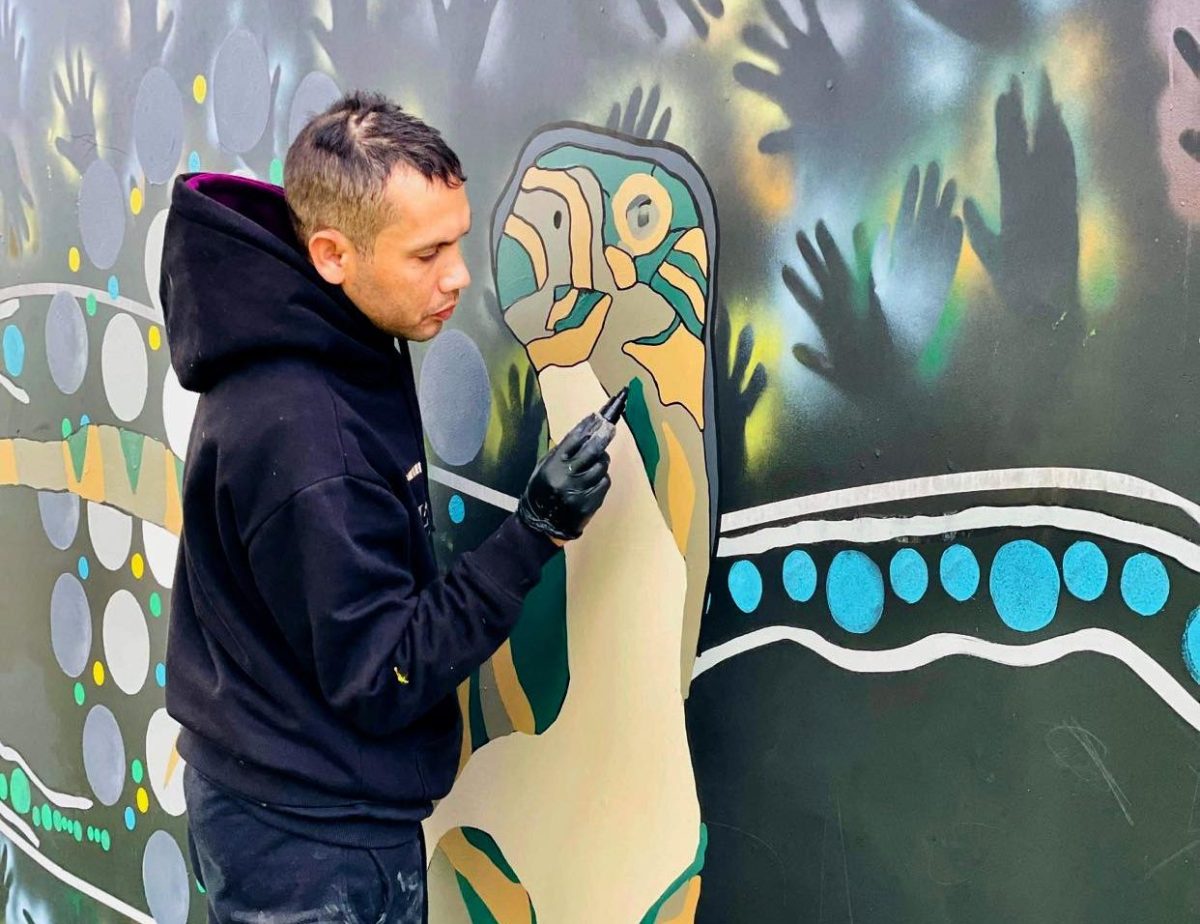
The Amaroo District Playing Fields’ pumphouse mural, which uses the same goanna design from Killara Art’s logo, is Steven’s favourite public artwork. Photo: Steven Kennedy.
His favourite piece so far has been the mural on the Amaroo District Playing Fields’ pumphouse, featuring a central goanna surrounded by students’ handprints.
“It’s about them leaving their mark as well,” Steven says – the themes of community involvement and handprints in particular run through many of his works.
“Community members want to be involved … and I say, ‘If you see me around, don’t hesitate to stop by to chuck your handprint on or you can help me paint a bit under my guidance’,” he says.
While letting anyone, let alone children, help with their art would no doubt send shivers down the spines of those whose pieces hang in the capital’s art galleries, Steven has a different view.
“When I grew up, you didn’t really get any involvement with Aboriginal or Torres Strait Islander people unless they were part of your family or football team or community,” he says.
“You didn’t really learn about [Indigenous cultures] and I think it’s about educating, especially the younger generation coming through now.”
Steven says while younger kids usually don’t understand what his paintings and digital designs mean or the stories behind them, it was more to do with just “getting that out there”.
“Aboriginal art has really taken off in the past couple of years [but] prior to that it was more about artefacts and you’d see pictures of rock paintings and such online and it wasn’t something you could physically see or touch,” he explains. But Steven is working to change that, and he says the Canberra community can expect more to come, with six more commissions in progress.
If you live in Mitchell, Florey or near Canberra Airport, you might soon see Steven at work in your suburb, including on a massive 700 square metre mural across two water tanks.
But despite Killara Art (rebranding to ‘Black Ochre’ as of July) growing into a successful business, Steven has no plans to give up his day job.
“Both are really important to me at the moment and being able to have that balanced lifestyle,” he says.
Original Article published by Travis Radford on Riotact.


